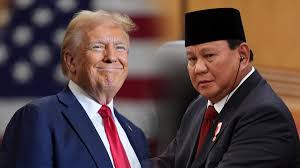In mid‑July 2025, former U.S. President Donald Trump announced an Indonesia US tariff deal, setting a 19 percent import duty on Indonesian goods entering the United States—down from a threatened 32 percent. In return, U.S. exporters would enjoy zero tariffs into Indonesia, alongside commitments for Indonesia to purchase Boeing aircraft, energy, and agricultural products. This high‑stakes agreement is part of Trump’s broader strategy to rebalance trade ahead of an August 1 deadline. The Indonesia US tariff deal offers both opportunities and risks for Indonesian exporters, manufacturers, and overall economic competitiveness.
In this article, we unpack the details of the deal, explore stakeholder reactions, assess economic implications, and outline what comes next in Indonesia’s evolving trade landscape.
Deal Structure And Key Commitments
The Indonesia US tariff deal involves several critical elements:
- Indonesian goods entering the U.S. will face a flat 19 percent tariff, replacing the previously threatened 32 percent levy.
- U.S. exports to Indonesia will be tariff‑free, a potentially powerful incentive for American industries.
- Indonesia has committed to purchasing $15 billion in U.S. energy products, $4.5 billion in agriculture, and 50 Boeing jets.
- The deal also includes measures to prevent Chinese goods from trans‑shipping through Indonesia into the U.S.
This dual‑track framework attempts to balance economic burden with incentives. Indonesian exporters gain tariff certainty, but at a cost. Meanwhile, U.S. producers gain new market access and high‑value contracts.
Economic Impact on Indonesian Exporters
From an export perspective, the Indonesia US tariff deal brings both relief and challenge:
- The 19 percent tariff still exceeds the 10 percent baseline that was in effect before Trump’s new wage-based scheme.
- U.S.-bound exporters such as footwear, electronics, palm oil, rubber, shrimp, and copper remain under pressure. Analysts warn the new duty may erode margins .
- Central Bank of Indonesia responded by cutting interest rates and noted the deal would provide macroeconomic stability .
- Financial analysts forecast capital inflows, but sound caution over increased U.S. imports hurting local industry in sectors like energy and agriculture.
The deal shifts Indonesia’s trade surplus dynamics. With nearly $40 billion in bilateral trade and an $18 billion goods surplus in 2024, the new tariff changes could narrow margins and alter Indonesia’s export competitiveness.
Political and Strategic Context
The Indonesia US tariff deal is as much political as it is economic. It follows Trump’s “Liberation Day” tariff directive in April and sets a hard August 1 deadline to conclude reciprocal trade agreements.
From the U.S. perspective:
- Trump aims to reduce the trade deficit and boost domestic employment via new export guarantees.
- The deal adds to similar “framework” agreements with the UK, Vietnam, and China.
- The commitment to Boeing and energy purchases aligns with Trump’s industrial‑policy agenda.
From Indonesia’s side:
- President Prabowo Subianto called Trump “a tough negotiator” but defended the final terms.
- Trade Minister Budi Santoso framed it as a “minimised damage” strategy, aiming to maintain competitiveness while supporting regional cooperation via RCEP.
- Economists suggest it may deepen structural vulnerabilities, particularly if U.S. imports flood local markets .
Sector Winners and Losers
Several sectors stand to benefit or lose from this Indonesia US tariff deal:
Winners
- Energy Producers: The agreement to buy U.S. energy aligns with Indonesia’s energy diversification and may reduce global pricing volatility.
- Agriculture Firms: U.S. agricultural product inflows could support domestic food security, but risk outcompeting local farmers .
- Aviation and Infrastructure: The guaranteed Boeing orders stimulate investment and supply chain development .
Losers
- Manufacturers: Indonesian exporters like footwear, electronics, textiles, and processed foods may suffer reduced US competitiveness .
- Palm Oil and Rubber Producers: Global price pressure combined with higher tariffs may squeeze margins .
- Local Consumers: Risk of increased U.S. imports displacing domestic alternatives—especially in energy and agriculture .
Risks and Long‑Term Considerations
The Indonesia US tariff deal carries several notable risks:
- Trade Diversion: Reduced tariff levels may attract reexports from China or ASEAN partners, prompting U.S. anti‑transshipment measures .
- Inflationary Pressure: U.S. import costs may filter into consumer prices, adding to inflation that was 2.7 percent in June .
- Policy Dependence: The deal anchors significant procurement (energy, aviation) in political agreements, which may change with future U.S. administrations.
- Regional Trade Tensions: While the EU is finalising its own Indonesia deal, Trump’s sudden policy swings risk undermining trust.
What Comes Next
Post-deal, stakeholders plan several follow-up steps:
- U.S. letters setting tariff rates to other smaller partners are expected soon.
- The EU is preparing $84 billion in counter‑tariffs to U.S. goods if its negotiations fail.
- Indonesia aims for deeper engagement via RCEP and bilateral FTAs with critical‑minerals and digital scope .
- Monitoring the actual flow of Boeing sales, energy, and agriculture imports will be key to assessing the deal’s success.
Conclusion
The Indonesia US tariff deal reflects the increasingly transactional nature of global trade. Indonesia managed to reduce worst-case tariffs and secure investment commitments in return. Yet it also accepted higher duties on exports and potential market disruption from U.S. imports. At stake is how Indonesia balances short‑term trade security with long‑term competitiveness in regional and global markets.
Moving forward, transparency in implementation, sectoral impact analysis, and proactive trade diversification efforts will be essential to ensure that the deal strengthens, not weakens Indonesia’s economic resilience.
Read More






 Sunday, 14-12-25
Sunday, 14-12-25







